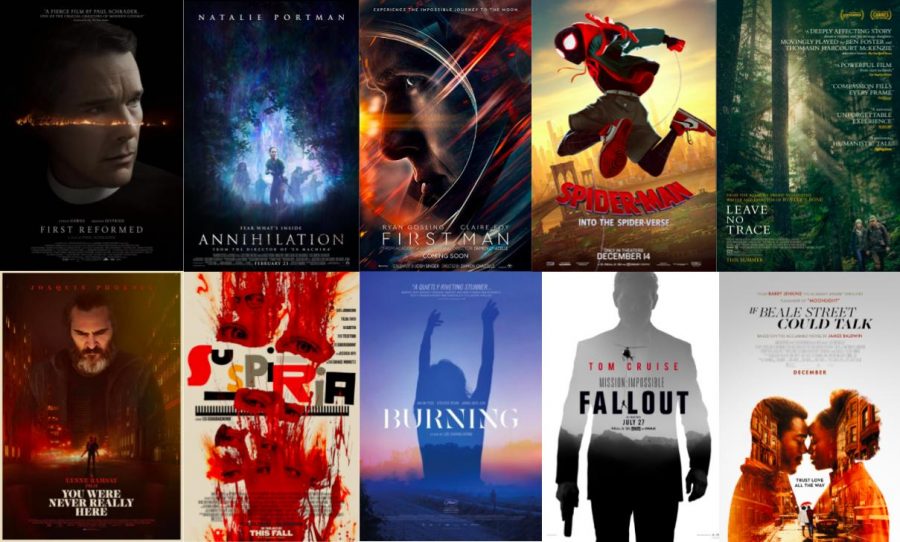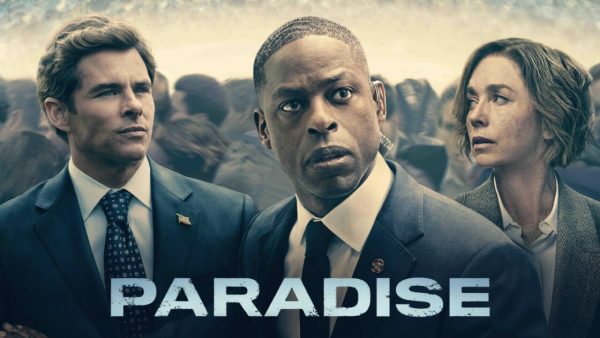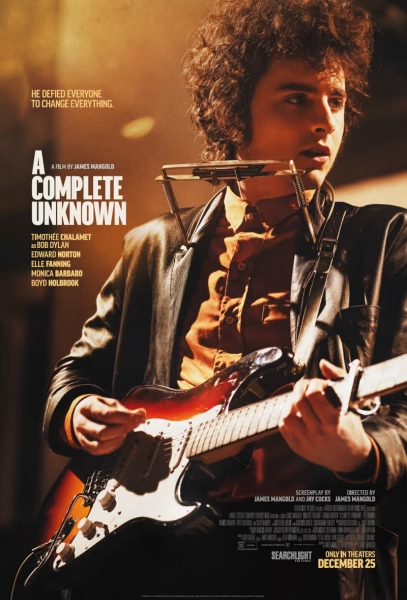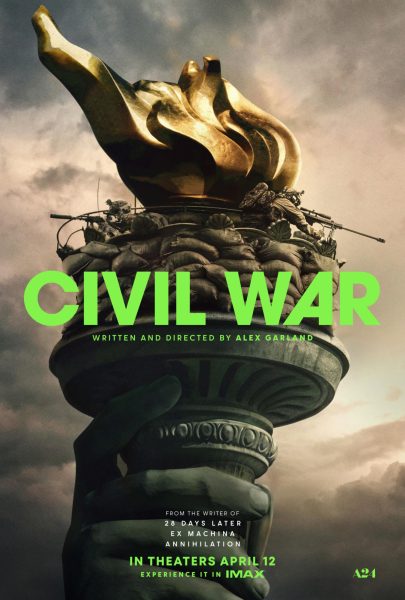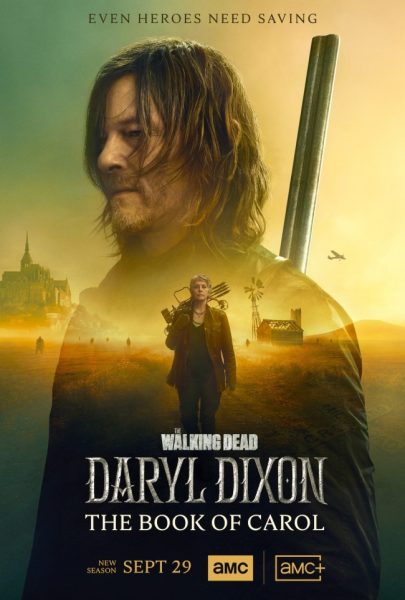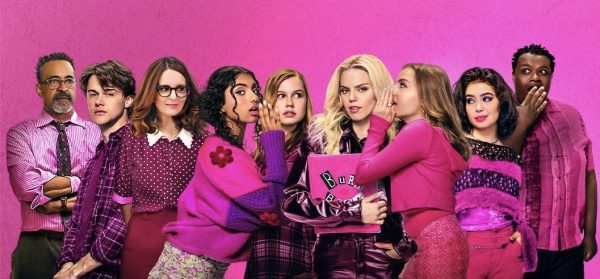Top 15 Movies of 2018
My “best of” list from 2017 began with praise for the incredible year in film that it was, despite stagnating box office numbers. In 2018, everything has only improved massively. Total domestic gross was up almost $900 million from 2017, and the plethora of high quality filmmaking was entirely overwhelming. In all aspects of the cinematic world, 2018 was simply an amazing year, and an improvement on the year prior.
Before the list begins, I would like to mention some notable films that I did not have the pleasure to catch in time for this list. These most prominently include Ryuichi Sakamoto: Coda, Crime + Punishment, Lean on Pete, and Skate Kitchen. As for films I did see that did not make the list, there were so many great films this year that I simply could not pack them all down into this incredibly small list. In this regard, I have to mention Capernaum, Widows, Vox Lux, Minding the Gap, and Hereditary among many, many others. With my exponential increase in contemporary releases watched from last year to this year, the selection process of this list grew even more difficult, and some great cinema had to be left out. Now, without further ado, here are my top 15 films of 2018.
15.) The Old Man & The Gun (directed by David Lowery)
It is not often that heist films end up being the most wholesome movies of the year, and yet here we are. This film is imbued with so much charm and small-town warmth that it’s impossible not to love. It overflows with a quiet and peaceful bliss, reserved and self-contained yet undeniably and deeply affecting regardless. Much of this charm originates from the living legend Robert Redford in his final role as the happiest senior bank robber on the face of the earth, and he is as full of life as ever. His vitality in combination with Lowery’s easygoing direction creates an experience that feels incredibly relaxing and necessary in a reality that moves a thousand miles per hour all the time. It reminds that the viewer that life is meant for living without feeling like the empty platitude that such a sentiment can become, instead rooting the idea deep in your system and imbuing its audience with a quiet joy for long time after.
Of course, Redford isn’t the only cast member worthy of praise. In fact, this film has one of the best ensemble casts I’ve seen in a very long time. In addition to Redford, Sissy Spacek, Casey Affleck, Tom Waits, Danny Glover, John David Washington, Tika Sumpter, Elisabeth Moss, Gene Jones, and Isiah Whitlock all add to the film’s unending magic in their own way regardless of their respective screen times. The intimacy between the audience and the characters on screen is brilliantly establish with gentle care by Lowery, such that the connection is impossible to avoid.
14.) The House That Jack Built (directed by Lars Von Trier)
This film is not for the faint of heart or the squeamish. In fact, it is a film that is very easy hate, made by a man who can best be described as not particularly well-adjusted. It is unquestionably violent and brutal, and many would say it is self-indulgent and pretentious, yet I would disagree. What is most frightening about the film is how comedic it is, and how it is able to achieve a level of philosophical ambiguity despite its intentional heavy-handedness. For those unaware of the film, The House That Jack Built follows a serial killer named Jack (Matt Dillon) as he goes about creating his “art” (as he claims his murders to be), intertwined with intricate philosophical conversations with Virgil (the Roman one, played by the late Bruno Ganz) himself. All of the film’s more sadistic elements lie on the surface though, and the underlying narrative of the film still achieves a wide variance in interpretation despite its inherent lack of subtlety. It could be a highly personal descent into the depths of Von Trier’s own psyche and career, or a commentary on strong-man politics and the destructive force of hyper-masculinity and self-aggrandizement in the political sphere, or a deconstruction of the desensitized and violence-hungry nature of the current consumer culture, or anything else one might conjure up while watching Jack descend into hell. Von Trier is undoubtedly unafraid to create controversy to further his goal in the creation of his art, and perhaps this is his greatest example of that.
13.) Shoplifters (directed by Hirokazu Kore-eda)
As Addie Bundren eloquently illustrated in Faulkner’s “As I Lay Dying” (although admittedly with a much more nihilistic tone), words like “love” and “motherhood” are simply things to fill a void, to be a placeholder for where there is a lack. They cannot be defined with strict conditions and circumstances. In Shoplifters, Hirokazu Kore-eda adds another word to the list: family. The film surrounds a poor family in modern-day Japan whose only means of survival is to scrounge for cash whenever possible, working odd jobs for little pay and shoplifting whenever they can to feed their large family. Despite their incredible destitution and seemingly hopeless situation, all they really need is their collective and immeasurable love to get by. As is always so for the upper echelon of all cinema, ambiguity is the key factor to this film’s success, as the very nature of the relationship between the characters on screen is difficult to define and often feels unimportant in the face of the sweeping emotional beats of the film’s story. Their lives are filled with gaps, and their happiness is strange, yet this is where the beauty lies.
Though the film is incredibly intimate, it does not shy away from the grander context surrounding it. We see as it an outsider does, a stranger peering into a world which it cannot or simply will not understand. The film does not flinch: it shows us people. Not good people, and not bad people, but human beings existing like anyone else, not defined by the outside world as human nature tends to guide us to do so. The film challenges its audience with questions of what bond blood holds that strangers cannot provide, and manages to bring humanity to a difficult existence. If film is reliant upon anything above else, it is empathy, and this film pulls it from its audience masterfully.
12.) The Rider (directed by Chloé Zhao)
Chloe Zhao, writer and director of The Rider, is truly one to watch. The Chinese-born filmmaker has found a way into the so-called heartland of America, crafting stories in underrepresented places and cultures that seem to go under Hollywood’s radar. In her two films, Zhao has reinvented the Western genre, superseding the previous efforts of screenwriter and later director Taylor Sheridan (all but the original Sicario). Zhao’s western is a more introspective one, a warmer and more beautiful portrait of the sweeping plains, and the destitution of the Native American reservations that they take place on. The important thing here though is that the film is in no way exploitative, choosing (for the best) not to focus on the environment but on the characters and their internal struggles as new-age cowboys. Zhao’s way of doing this is incredibly unique, risky, and genuine. All of the “actors” in the film are people from the area of South Dakota where they filmed, including the main character and his family. In fact, the main character’s story is very close to the actual experience of the man who plays him. Even if none of this was true, the film would still be remarkable in its emotional depth, visual beauty, and ability to grasp the maximum amount of empathy from its audience. The Rider is the type of film that changes your perspective on life and your surroundings entirely as you step out of the theater, which is one of the highest of accomplishments that any film can achieve.
11.) Cold War (directed by Paweł Pawlikowski)
Love is love. It is nothing but what we call it. Love does not erase time and boundaries, rather it is defined and shaped by them. Love doesn’t transcend the borders people cross, those borders instead cut into and chip away at it, leaving wounds and scars that can heal in strange ways or remain deep and painful. Paweł Pawlikowski’s Cold War uses the Iron Curtain-era political turmoil in the decades immediately following the Second World War to show us how love can be affected by such events, by borders enforced harshly, by time that is not kind on those who struggle, by a world split in two by a line of political difference. There are no politics in Cold War, just a backdrop around which love can be shown. People change, cultures change, but can love stay the same? We’re different people when we’re in different contexts. We might be a respected artist in one place and a lowly pianist in another, or happy in a world of sad people and sad in a world of happy people. Can love ever survive in an inconsistent world?
The structure of the film emphasizes how we tell stories. Lives become exaggerated as only the essential elements are kept and even those are embellished (with the aid of high contrast black and white cinematography). This is why Cold War finally reveals itself, in a subtle nonspecific manner, to be a dedication to the lives of Pawlikowski’s parents. It’s a messy representation of history that jumps around time and reality, but there’s a small amount of truth, just like a memory. Then it ends. Cold War is a marvel, a concoction of what love can mean in difficult circumstances, and how it can be married to a constantly changing history. It’s a beautiful film and an ode to what love can truly be: wild, disjointed, and governed by impulse, yet meant to be.
10.) If Beale Street Could Talk (directed by Barry Jenkins)
If it weren’t already evident with his 2016 masterpiece Moonlight, Barry Jenkins is fluent in the language of cinema. This is a special trait that only the directors who have ascended into the highest tier of the cinematic pyramid have, and although these directors may have much more extensive oeuvres and the benefit of longevity, Jenkins looks well on his way to achieving this feat. The director has long made clear of his obsession with Hong Kong Chinese director Wong Kar-Wai (In the Mood for Love, Chungking Express, etc.), and the mark that the legendary director left on Jenkins grows more and more evident with each film. With the help of DP James Laxton, the camera glides through each and every scene with an unmatched elegance full of serenity and precision, capturing stunningly beautiful tableaus typically reserved for more expansive projects. The flowing splendor of the photography allows the harmonious beauty of the love captured on screen between Tish (Kiki Layne) and Fonny (Stephan James) to move right through the screen and deep into the hearts of each and every viewer. Alongside the beauty of the love, however, is the pain of oppression that cannot be ignored, the unbearable weight of a kafkaesque system that exists to hold African-Americans down, forcing them to live in spite of it. The film’s intense yet intimate emotionality is achieved in various beautiful little moments centered around some of the film’s smallest roles, especially those involving Brian Tyree Henry (who had perhaps the best supporting performance of the year in a few short minutes), Dave Franco, Colman Domingo, and Diego Luna, among a few other surprising yet impactful cameo performances. If Beale Street Could Talk is a universally beautiful film, wrought with melancholy, agony, and frustration. I think James Baldwin would have been proud.
9.) Leave No Trace (directed by Debra Granik)
A beautifully slow and quiet film, Leave No Trace is one that almost shies away from the audience, calling you to find the rich emotional beats lying deep underneath the dense undergrowth. Director Debra Granik (of Winter’s Bone fame) gets back to her nature-centric roots, churning out a story of a PTSD-ridden military veteran and his daughter illegally living in a state park, where they are caught and a deeply emotional journey ensues. Leave No Trace is an equally heartwarming and gut wrenching film, and one that brilliantly tackles the state of veterans’ affairs in our country today, dealing with PTSD, the opioid epidemic, and the pitfalls of an underperforming government. It deals most heavily with the struggles of finding your place in the world, and the weight of such a struggle lands heavily, yet gracefully. Leads Ben Foster — who is steadily carving himself out as one of the best actors around — and newcomer Thomasin McKenzie are brilliantly subdued; there’s always much more meaning to seeing someone try not to let their emotions fly than to watch someone who is so outwardly expressive. This father-daughter relationship is the center of the film, as both are forced to reconcile their own natures in the face of turmoil imposed upon them by the outside world. Leave No Trace slowly eases its way deep into your heart, and by the end it will never leave.
8.) Mission: Impossible – Fallout (directed by Christopher McQuarrie)
It doesn’t take long to recognize that Mission: Impossible – Fallout is one of the best action films ever made. Some will see the light during the first act HALO (High Altitude, Low Opening) jump, when Tom Cruise caps off an exhilarating long-take by leaping out of a C-17 at 25,000 feet, aerial photographer Craig O’Brien capturing the stunt from the massive IMAX camera strapped to his chest. Others might cotton to the film’s brilliance during the bare knuckle fight scene that follows in the bathroom of a Parisian nightclub. Henry Cavill packs so much firepower into each punch that he literally has to reload his arms, and director Christopher McQuarrie — invoking the best of James Bond as he shoots the brawl without any music on the soundtrack — makes sure that we absorb every bodyblow and wince at each piece of busted tile. And if anyone is still on the fence after that, there’s a pretty good chance they’ll be convinced by what comes next: a symphonic, character-driven rescue operation/motorcycle chase/underground getaway sequence that speeds across the glory of a sunbathed Paris along a breathless riptide of raw spectacle. Not since Mad Max: Fury Road have such viscerally practical effects been put to better use by such deliriously impractical people. And they’re only just getting started. Yeah, aside from a little CG here and there to touch up some things, add some explosions and the like, every stunt that you see is practical. Tom Cruise, a freakish 56 year old man, jumped from 25,000 feet over one hundred times, drove a motorcycle against traffic (without a safety rig, might I add), flew aerobatics in a helicopter, jumped from building and literally snapped his ankle (of course, he finished the take), and brawled with enormous bad guys. The man is undoubtedly the greatest action star of all time. In terms of his cast though, he has a whole lot of help making this film as riveting as it is. Ving Rhames, Simon Pegg, Rebecca Ferguson, Sean Harris, Alec Baldwin, and Michelle Monaghan reprise their roles, with new editions Henry Cavill, Angela Bassett, and Vanessa Kirby all seamlessly transitioning into the franchise. The cinematography from Rob Hardy is legitimately gorgeous, ranging across the spectrum from elegant and glamorous to gritty and dark. It’s not often that huge blockbusters like this are legitimate cinematic masterpieces, but this one is.
7.) Spider-Man: Into the Spider-Verse (directed by Peter Ramsey, Bob Persichetti, Rodney Rothman)
There is a certain stigma about animated films in America that associate them solely with childish stories and themes, and thus American animation often solely desires to entertain a specific audience rather than develop legitimate themes and have maturity. Of course, I am not calling for the cancellation of children’s movies in Hollywood, I mean, who doesn’t enjoy Disney and Pixar at least to some degree? Instead, it must be recognized that animation is simply the medium by which a team of creators has decided to craft their art, and should carry no association with some apparent innate intended audience. Internationally, this has already occurred, and I think with a few recent efforts in America we are well on our way as well. This new Spider-Man film is one of those efforts, and it might just be the best one at that. Spider Man and superhero movies are by no means anything new at this point, and the potential for staleness was a serious concern right from the start. Thankfully, this newest rendition of the Spider Man cinematic canon totally reinvents the foundations of the previous efforts, with a little something up its sleeve. Of course, the film focuses on Miles Morales rather than Peter Parker (although he does feature extensively, in fact two versions of him do), an African-American teenager growing up in Brooklyn who happens to come upon an almost identical set of powers as the prominently recognized Peter Parker version of the character. The film handles this transition with incredible intelligence, crafting a new and exciting story full of new and exciting characters. The animation style is truly unique, fully capturing the classic aesthetic of the comics that started it all. The flying colors jump off the screen, and many of the film’s extended spectacles are legitimately breathtaking and full of a beauty that American animation often fails to realize. As for the film’s emotional beats, they cut deep in every which way they go, and you will inevitably find yourself falling in love with this incredible cast of characters that the filmmakers pulled together. Pure euphoria is not easy to achieve, yet this film seems to constantly have its audience in this state. A brilliant achievement that is sure to have a lasting effect on the world of animation in America for years to come.
6.) Burning (directed by Lee Chang-dong)
Burning is an incredibly ambiguous film that can be difficult to wholly figure out. The story revolves around Jong-su — an aimless 20-something working class delivery man in Seoul — making a chance encounter with Hae-mi, a girl who once lived in his neighborhood. She asks him to watch her cat while she is on a trip in Africa, and upon her return she introduces him to Ben, an enigmatic and incredibly wealthy young man with some mysterious and strange hobbies. From this base the story builds, along with themes of class, longing, and more, and in the end has its audience questioning the very nature of the reality of the events that occurred on screen.
There is a kind of abstract drift that dominates Burning. It’s not just that there’s a mystery at its center — first who the love object, Hae-mi, really is, and then where she goes. It’s that even as individual scenes have a concrete quality to them, they all seem to float alongside one another, like lily pads on the surface of a lake. Numerous subplots and incidents “go nowhere” in the conventional sense, although they do all amount to an impressionistic sense of turmoil for the main character Jong-su, a life defined by losses that have become so normalized that they seem incremental. Burning meanders along at a slow and methodical pace like smoke drifting through the air, yet it has no trouble fostering tremendous intrigue and building to point of momentous climax. Throughout the film, Chang-dong makes several references to Faulkner, and the connection is uncanny, as the otherworldly and ambiguous feel of the story and unreliable perspective pervades both the director and the author’s work. Burning is a cerebral and transcendent piece from a director at the peak of his game, through which Chang-dong crafts an entirely new film grammar.
5.) First Man (directed by Damien Chazelle)
Biopics tend to suck for the most part. At best, they are decently enjoyable and nothing more. It takes a really incredible director to break from this pattern, and Damien Chazelle is one of the few to do so. First Man centers around the life of Neil Armstrong, one of the greatest figures in the history of humanity. His story, like most other historical figures covered in films, is one that could be easily lined up point by point from his Wikipedia page with no real insight into the man, his mission, and those around him. Thankfully, Chazelle recognized this, and instead focused solely on the ten years or so leading up to his most famous mission as to truly get deeper into the character as a whole. Instead of just his life story, Chazelle was interested in his motivations, his strengths, and his frailties, and how a mindset like Armstrong’s comes to be. Ryan Gosling in his role as Armstrong is simply perfect in every way, carrying the rigid uniformity of the man, yet capturing his emotional weaknesses with stunning subtlety. Along the way, it is made abundantly clear how important family is to the story, as tragedy within Armstrong’s home sends him spiraling into his own shell, where his mission becomes his only prerogative. Many of the most emotionally tense scenes don’t occur in space, but rather in the home. In these scenes, Claire Foy as Armstrong’s wife shines, bringing an intensity and empathy that carries the film’s familial conflicts. Now, this film would have been a very intelligently-crafted character study even without any forays into Armstrong’s ventures into space. However, this story thread adds an excitement and level of awe that adds overwhelmingly to the emotional spectrum of the film. One of the final segments of the film (this is no spoiler, let’s be honest) is the legendary Apollo 11 mission, and the mastery with which Chazelle crafts the sequence elevates the film to an outright masterpiece of cinema. Right as Aldrin and Armstrong step off the lunar module, the camera pans out over the expanse of the moon and the endless universe that beyond it, and there is simply no tangible way to describe the effect it has on the viewer. Whether it be awe or wonder or shock, the overwhelming feeling it evokes escapes the bounds of our worldly languages just like the men who so daringly ventured beyond our little planet. Simply put, going to the moon is the greatest thing humans have ever done, and First Man captures this grandiosity to stunning effect, without losing any of the intimacy in regard to its main character.
4.) Suspiria (directed by Luca Guadagnino)
In 1977, legendary Italian giallo director Dario Argento released the first of his now hallowed “Three Mothers” trilogy with Suspiria, centered around an American dancer trying to make it in a prestigious classical dance academy in Berlin, which, unbeknownst to the dancers, is run by an ancient coven of witches. The film is an ecstatic and harlequin frightfest ablaze with technicolor magic and a chilling score from Italian prog band Goblin. The now cult-classic is full of cheesy effects and awful dubbing, and thus despite its legendary status a new take on the material could have been an interesting prospect in the right hands. Thankfully, those hands were Luca Guadagnino’s. While the setting, chilling mood, and most basic of overarching plot points remain, Guadagnino’s take is almost wholly unique in its approach, is better for it. Where Argento bathed his scenes in fiery reds and hauntingly deep blues, Guadagnino and DP Sayombhu Mukdeeprom offer more muted tones, allowing for the fear, tension, and dread to build to a frightening state. Where Argento seeks to shock, Guadagnino seeks to get deep under his audience’s skin, inviting their subconscious fears to take over rather than simply get his audience to flinch or jump in fleeting moments of fright.
However, to boil this film down to just a horror film purely out to freak out its audience would be to do it a disservice. The evils of the 20th century are intricately woven into its plot, with frequent references to the Red Army Faction and the Cold War. It connects themes of motherhood to ethnic nationalism and the abuse of power in dark and frightening ways as well. Most of all though, the film revels in the intense and varied emotional response it evokes from its audience. Of course, its ability to craft a sense of overarching dread and be incredibly unsettling is its primary focus, yet throughout the film we find various moments of melancholic beauty, and often in a way that is strangely dissonant with the general events on screen. This emotional variance is aided gorgeously by Thom Yorke’s sometimes haunting, sometimes elegantly wistful score. As a whole, Luca Guadagnino’s Suspiria is an otherworldly horror laced with intimate beauty, and though it is at times not for the squeamish, it is expertly crafted in all manners possible.
3.) Annihilation (directed by Alex Garland)
Mankind has a general fear of the inexplicable, or at least a tendency to assign a human-centric explanation for it in an act of hubris. The most human trait is to lack the ability to reconcile the fact that most things exist beyond our scope, and do not adhere to our understanding of the existence. How then, in our art, do we portray the inexplicable? How do we reconcile the nature of what exists on a higher plane than us? Alien movies for decades now have crafted little green men, humanoid figures with an active desire for something from us or a simple desire to destroy us. They exist within the bounds of the human senses, and even have many similar animalistic characteristics to life as we know it. Is this hubris, or a simple barrier of intelligence simply cannot break? Who are we to conclude that otherworldly forces are something we could ever imagine, or would even remotely fit into our understanding of the world? Why should an alien want to accomplish something, incite conflict, or communicate with us? Enter Alex Garland, writer and director of the sure-to-be science fiction classic Ex Machina and now Annihilation, a spellbinding, beautiful, and often frightening tale of an extraterrestrial force crashing to earth, and the aftermath of the event (not too dissimilar to H.P. Lovecraft’s The Colour Out of Space). His ability to probe into the deepest and most self-destructive human tendencies while simultaneously crafting the most imaginative portrayal of an alien force on the silver screen perhaps in history makes this film an instant masterpiece. He respects the audience’s intelligence as well, never stopping to lecture the viewer as to what is going on in the story. Often times he allows for extended scenes excluding dialogue, in which the utterly mesmerizing score from Geoff Barrow and Benjamin Paulista crafts the tone and mood of the scene effortlessly alongside the brilliant performances from Natalie Portman, Oscar Isaac, Gina Rodriguez, and others. Annihilation gets under your skin and burrows its way deep into your mind, forcing you to confront yourself and the idea of your existence — the most frightening prospect of all.
2.) You Were Never Really Here (directed by Lynne Ramsay)
Previously in this article I mentioned that Barry Jenkins is fluent in the language of cinema. However, whereas for most directors who achieve such a command of the form, it is nothing more than a second language. For Lynne Ramsay, she might as well be a native speaker — a presiding member over the creation of the cinematic dictionary. She is so adept at crafting the moving image that at times, dialogue is almost a hinderance, and thus the spoken word is a fairly sparse occurrence in this film. Instead, Ramsay uses all of the aspects of the cinematic medium unique to it to craft her art through editing, cinematography, and score, all of which were undoubtedly the best of the year. Instead of using language to create a background for her main character, her brilliant understanding of Sergei Eisenstein’s montage theory allows her to convey motivations, emotions, and values of characters all through her clever collection and coagulation of images. Why should we be told what is going on when we can see it for ourselves? Like only a handful of directors before her (Lynch, Tarkovsky, etc.), Ramsay understands the treachery of language. Language can never truly capture the intended message in the way that an image can, and thus You Were Never Really Here is utterly entrancing. This emotionality is often aided by Jonny Greenwood’s score as a result of the minimal dialogue, which is one of the most sonically diverse yet strikingly beautiful scores I have ever heard. When you combine all of this cinematic inventiveness with the gravity and force of Joaquin Phoenix’s all-time great performance, it is impossible not to marvel at what an incredible cinematic achievement this film is.
1 .) First Reformed (directed by Paul Schrader)
First Reformed is a film that will go down within the halls of film history as one of the medium’s greatest ever religious films alongside the work of almost mythical legends like Dreyer, Bergman, and Bresson. However, as the film and current scientific data suggests, these halls of history are more than likely to soon come crumbling down, bringing humanity itself with them. If the film is anything in particular, it is soul-shaking despair under the eyes of God, full of quiet and unregulated self-torment in the face of the hopelessness of the future. Almost uncomfortably intimate close-ups achieve unrivaled levels of meaning and connection litter the frame. A pastor battles with his faith and reason in this tormented world, and is forced to come to terms with the brutality of nature and his own transcendental experiences within it. A lifetime achievement award worthy performance from the legendary Ethan Hawke elevates the film to another level, with each and every supporter furthering this elevation, notably Amanda Seyfried and Philip Ettinger. Any fan of Paul Schrader — writer of Taxi Driver and director of Mishima: A Life in Four Chapters — knows of his continuous struggle with faith and hopelessness in the modern world (Schrader is a devout Calvinist). He leaves nothing to be desired here in this regard, pondering these weighty ideas in the face of the possible self-destruction of the human race through climate change. He dances the line between glimpses of hope and utter despair to the point that it becomes the audience’s job to extrapolate the relative levels of each extreme they must pull from the film (as it should be, might I add). First Reformed is a hard-hitting look at the world of 2018, and leaves us with a truly disquieting question to ponder: can God forgive us for what we’ve done to this world?

PJ Knapke is a senior at Glenbard West and a Columnist this year for the newspaper. His focus on is on film-related content, particularly reviews. He is...
